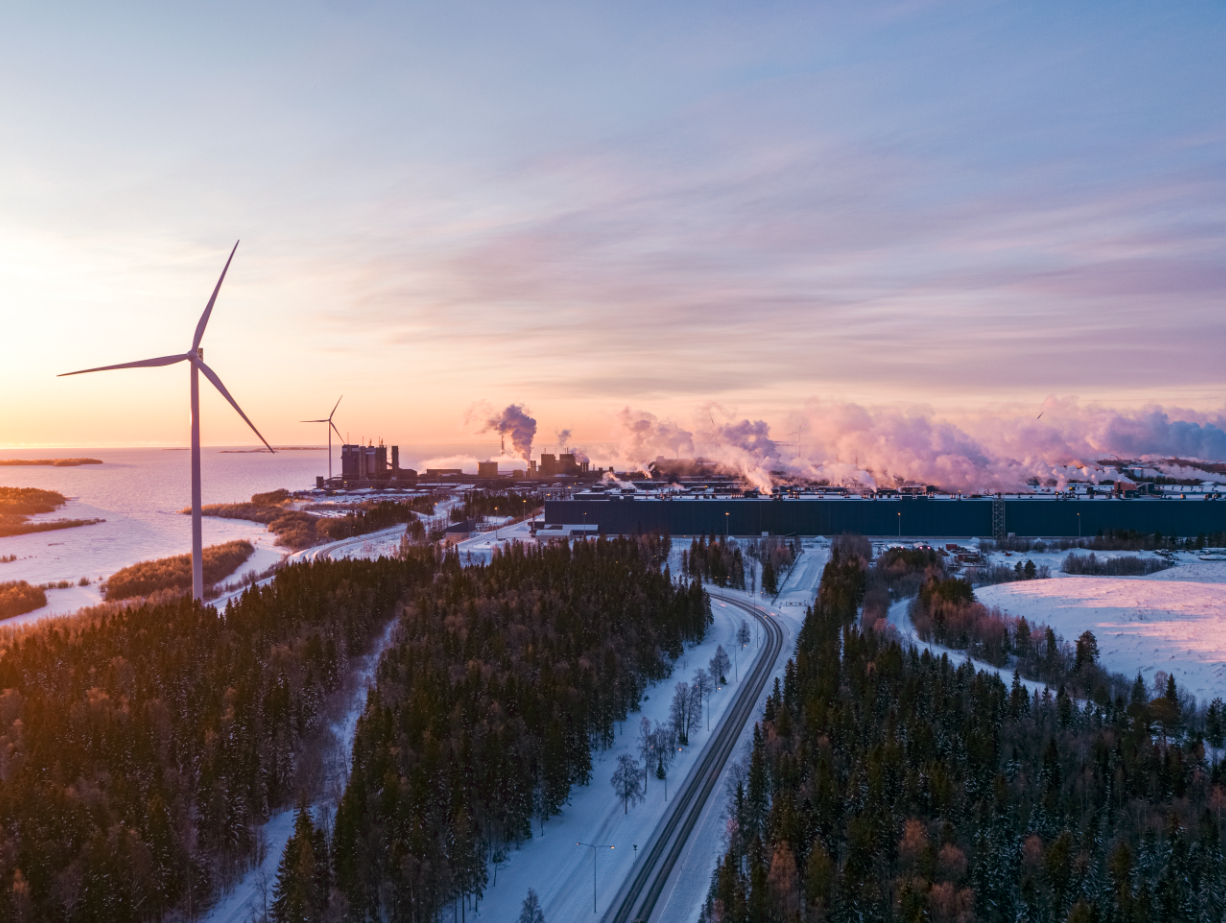By Joanne McIntyre
Max began by highlighting that Outokoumpu is currently the only SBTi (Science Based Target initiative) approved stainless steel producer, an outstanding benchmark to achieve. With the ambition of reducing its carbon footprint from the baseline of 2016 to 2030 by 42%, the company is well on track.
“Outokumpu has achieved the lowest carbon footprint in the industry, 70% lower than the global average, while the Circle Green line is 92% lower. Our carbon footprint is approx. 1.8 tons of CO2 per ton of stainless steel produced.”
Outokumpu promotes full transparency and covers all Scope 1, 2 and 3 emissions when reporting emissions, and a commitment to provide this detailed information for every product.
“We’re the only European stainless steel producer to provide full transparency on all three scopes,” explains Max. “We believe this is essential to fully decarbonise and transform the industry. Our long-term climate target is to reduce our direct and indirect CO2 emissions and those of our supply chain (Scopes 1, 2 and 3) by 2030 and reach carbon neutrality by 2050.”
Milestones to achieving emission reduction
High utilisation of recycled materials is a key factor in lowering CO2 emissions. Outokumpu achieved 94% recycled content in its stainless steel in 2022, and it currently recycles over two million tonnes of stainless steel per year.
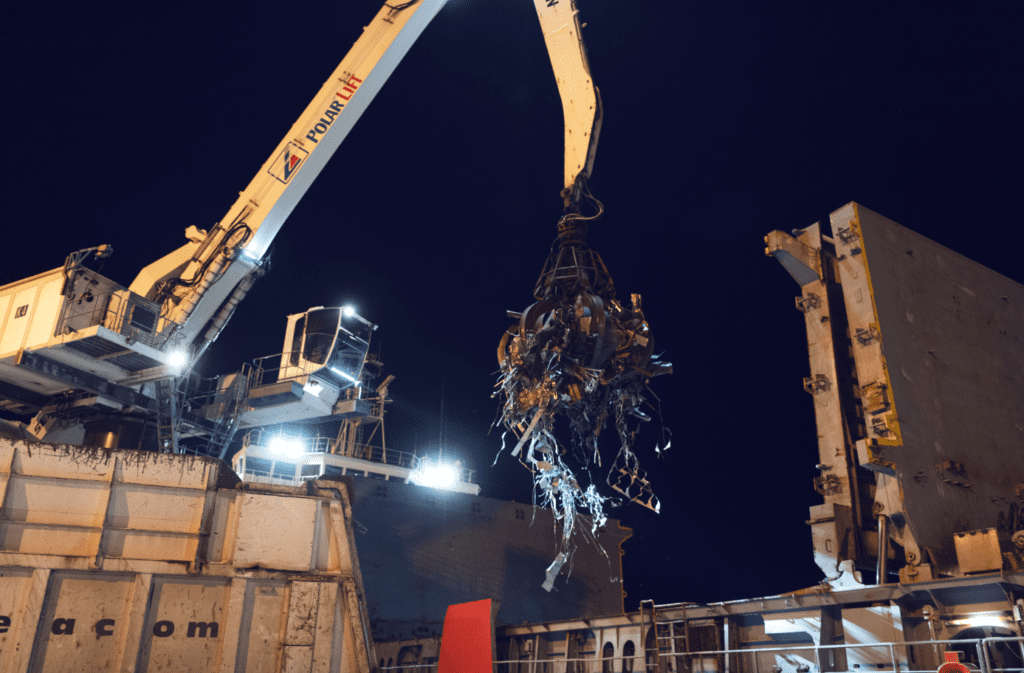
Outokumpu is the only major stainless steel producer with its own chromium mine and ferrochrome production, both of which are equipped with the latest technology.
“Our ferrochrome raw material has a very low carbon footprint of 42% of the industry average,” continues Max. “Furthermore, we aim to achieve carbon neutrality at our Kemi chrome mine by 2025.”
Product-specific carbon footprint
Outokumpu is the first stainless steel producer to provide a product-specific carbon footprint based on continuous production data.
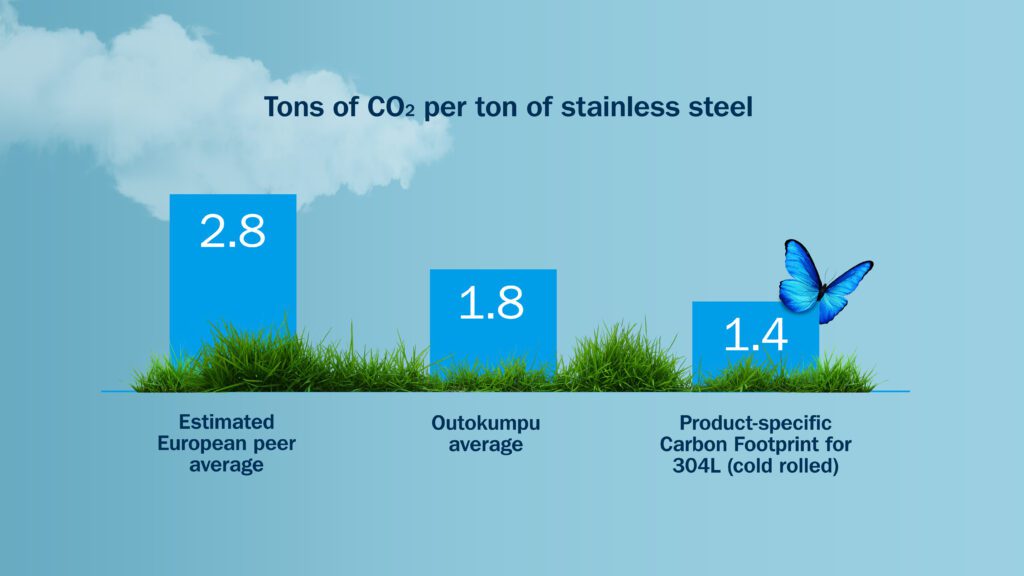
“We’re happy to be the first stainless steel producer to provide the information for products produced in our European mills,” explains Max. “Customers utilise the data to calculate the carbon footprints of their products and provide more sustainable solutions to the market. The CO2 value is averaged over 12 months but updated every month. We enable our customers to move from CO2 reporting to active CO2 management. You can manage your Scope 3 emissions and your company’s carbon footprint by using our products which offer full transparency.”
Transparency from suppliers
Outokumpu includes Scope 1, 2 and 3 emissions in its product-specific carbon footprint calculations. Scope 3 applies to raw materials and is challenging to assess in a global market. “We have a team in our raw material procurement department dedicated to assessing the sustainability of raw material suppliers. For example, they visit our suppliers’ mines to determine their business procedures and assess the ESG (Environmental Social Governance) goals.”
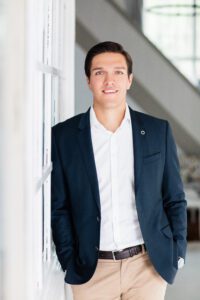
This is yet another way Outokumpu is pushing the industry forward, encouraging all parties in the supply chain to operate transparently and meet sustainability targets.
“As green steel becomes more important, we are obliged to deliver it for the future of our planet. Customers are starting to make sustainability a procurement criterion,” continues Max. “Suppliers must work on their sustainability as, eventually, there will be sustainability requirements for all links in the supply chain.”
Circle Green
Outokoumpu’s revolutionary stainless steel, Circle Green, has the smallest emission intensity in the world, with up to 92% lower carbon footprint than the global average and up to 64% lower than Outokumpu’s regular production.
The unprecedented emission reduction was achieved with improvements throughout the whole production chain. Reductions in upstream raw material emissions were key as they contribute most of the total carbon footprint. Meticulous production and quality optimisation have led to higher energy efficiency. Biogas, biodiesel, biocoke, and low-carbon electricity have eliminated 95% of all scope 1 and 2 CO2 emissions. While these bio-based materials have all been tested previously in production, they were used together for the first time to produce Outokumpu Circle Green.
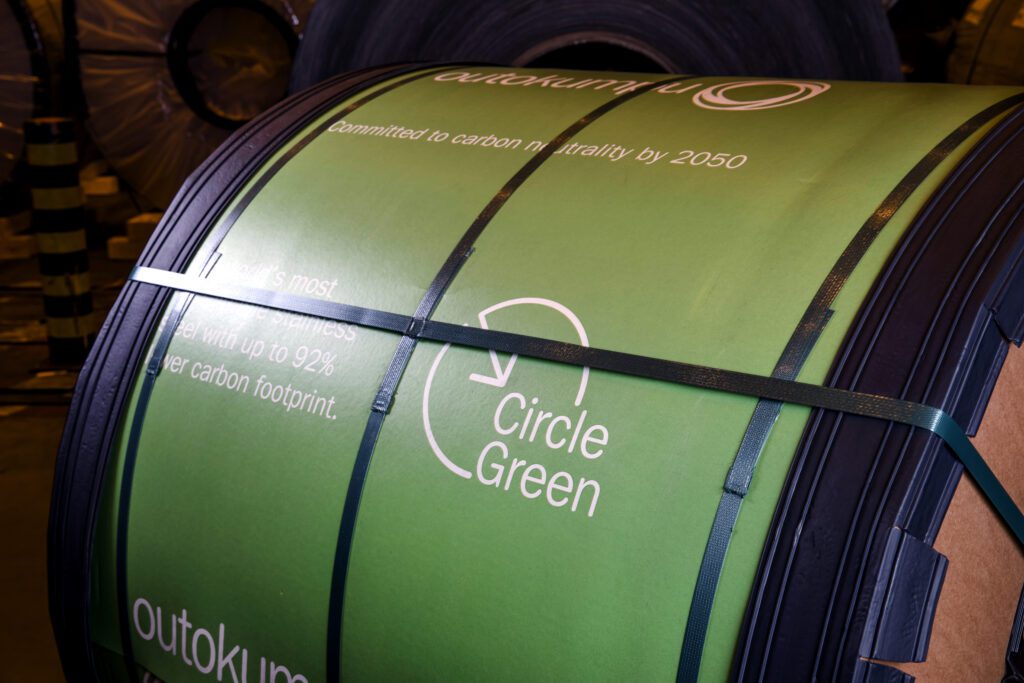
“In this first phase, we will concentrate our efforts on serving a few strategic customers, but we are ready and able to scale up the production,” Max enthuses. “We promise our customers when they select Circle Green that we are cutting the CO2 emissions against our conventional offerings by at least 50%. This makes it very tangible what is possible for CO2 management.”
The first batch of Circle Green was delivered to Fiskars Group, a leading company producing design-driven indoor and outdoor living brands, for use in cookware products. “We already see significant demand for Circle Green in this sector,” explains Max. “Another key future market will be the automotive industry, which is pushing its supply chains to decarbonise.”
“We’re the first steel producer able to deliver green steel in significant volumes to the market and are ready to take on this pioneering role and transform the industry.”
Carefully controlled production chain
Surprisingly, Max explains that Outokumpu Circle Green steel is produced using the same assets as conventional products. It already used electric arc furnaces and further reductions of the carbon footprint were achieved with a three-pronged approach:
– A selective approach to primary raw materials and controlling Scope 3 emissions by optimising the mix, e.g. biocoke to make ferrochrome.
– Using fossil-free energy throughout the production chain, e.g. biogas.
– Careful control of production to achieve very high efficiencies.
“In the fight against climate change, we hope more manufacturers focus on this direction. We aim to educate the marketplace so that demand for sustainable steel grows and customers become more selective in the materials they purchase.”

